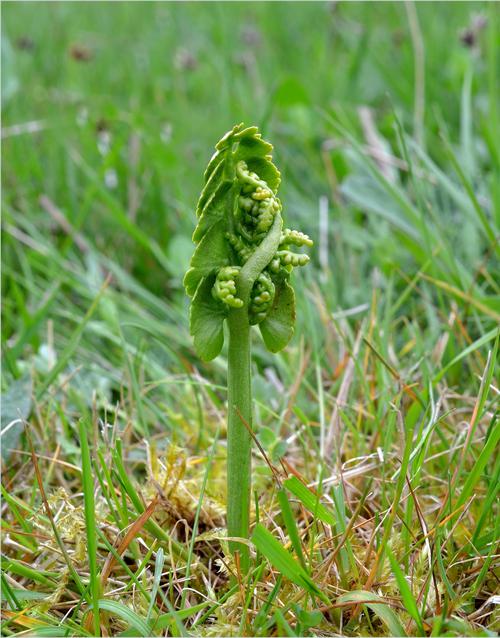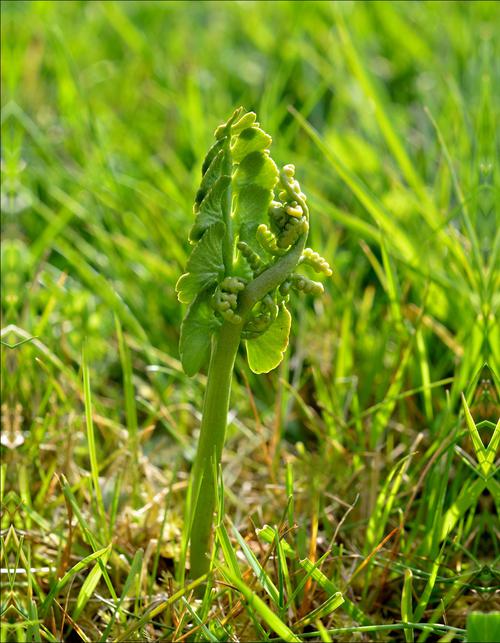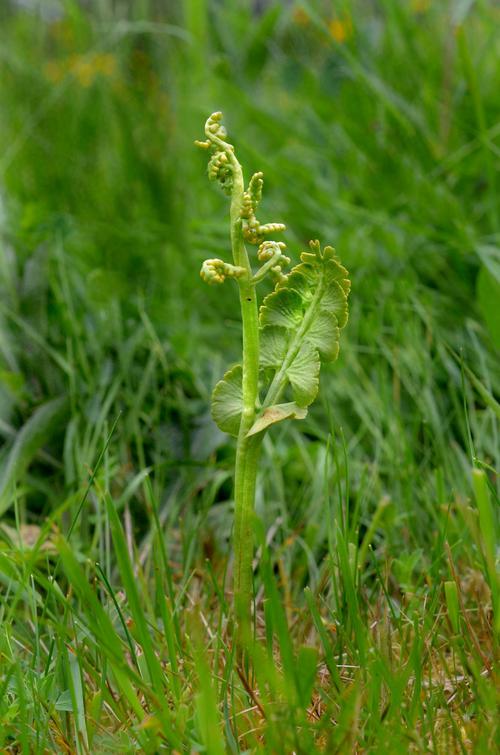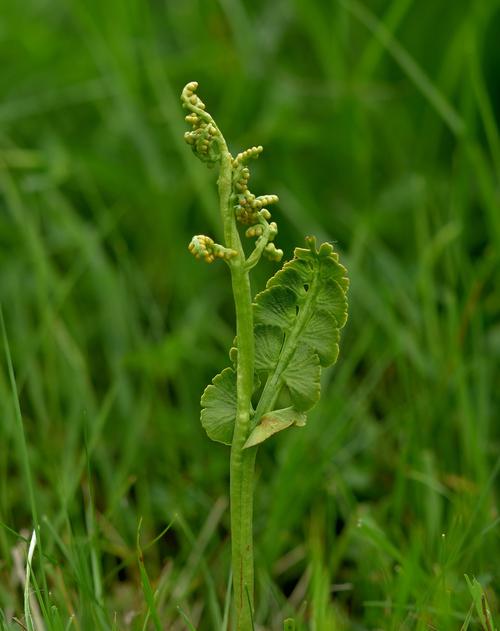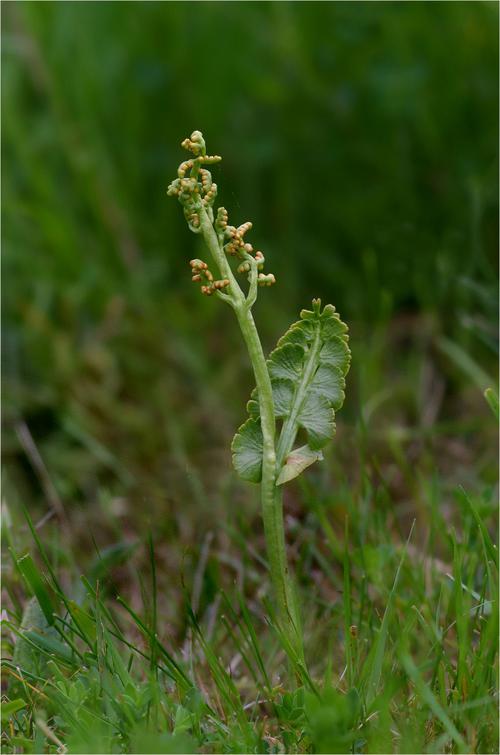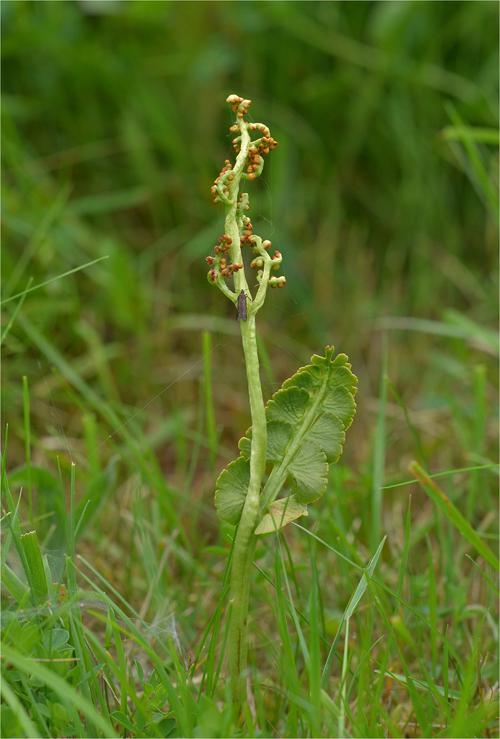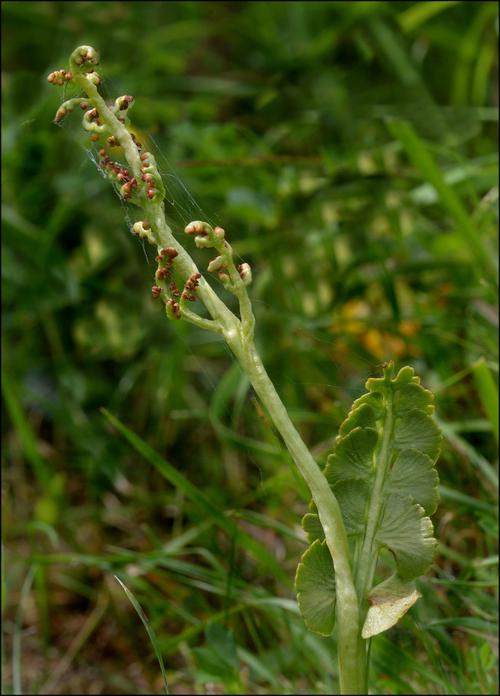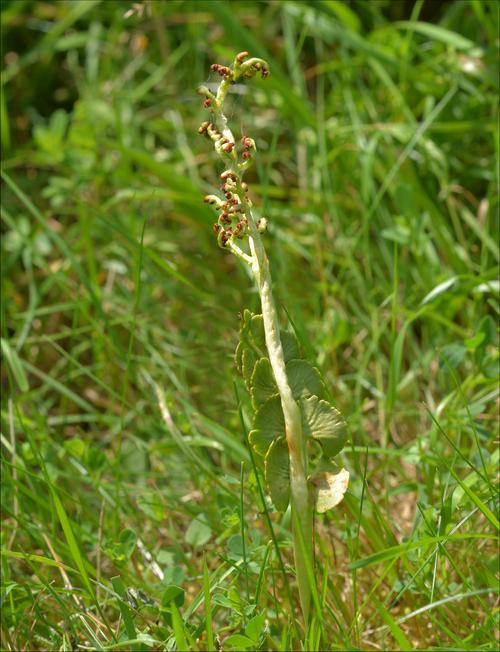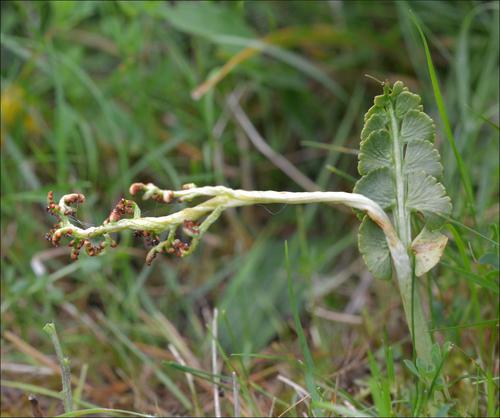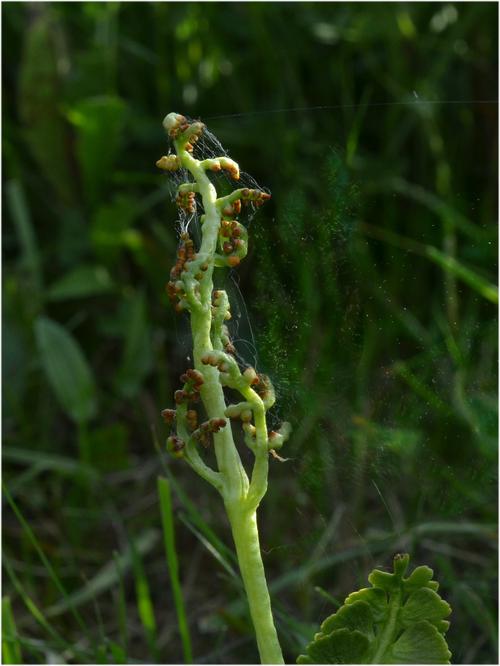Moonwort Botrychium lunaria near Lodge Hill Farm, Wyre Forest
John Robinson
Lodge Hill Farm
Moonwort Botrychium lunaria had been recorded previously from Worcestershire (Bredon Hill, Bewdley, Habberley valley, Hartlebury Common, Astley, Shelsley, Lickey monument) although somewhat erratically in the past. The record by Jordon in 1864 referring to “somewhere near Bewdley” may have been our site.
It had been regularly recorded from the North meadow at Lodge Hill Farm, but not every year, during my time as warden of the Wyre Forest National Nature Reserve (NNR) from 1976 and also during my subsequent 13 years of retirement. There are reports of 11 plants being found in 1992, and two in 1999 on the same site.
Moonwort was mentioned in the original Wyre Forest NNR Notification, along with Adder’s-tongue Fern, in relation to the meadows at Lodge Hill. To my knowledge it was never found at any other sites within the Wyre Forest, but may have been present. It always appeared in a relatively small area of the Lodge Hill meadow. Although not recorded every year it is very easily missed due to varying characteristics of grass growth in each season. It is also worth noting that it was not searched for in every year. At first emergence it is small, insignificant, and very, very easily missed.
Originally, before the declaration of the nature reserve, the meadow was managed in a quite a “haphazard” way. It was grazed by the odd milk cow and calf, perhaps a few sheep and a single horse which the then owner used with his cart as transport to market and for other farm work. Some other areas away from that were cut for hay - mostly by hand.. There were anthills scattered about the grassland.
Because it was difficult to replicate this type of ad hoc grazing etc the Nature Conservancy Council (NCC) prepared a management plan and the section where the moonwort occurred was included in the “cut for hay” section. A little later the area in the NE corner was left alone for ease of getting the hay baler round the cramped corner. Later we did manage to get a grazing regime into operation using sheep at first and then cattle later and the hay making in the North section of the North meadow ceased completely in approximately the mid 1990’s. The grazing was kept fairly light, as to avoid too much anthill poaching and to replicate as near as possible the historical light sporadic animal based management. In recent years the meadows have been grazed from about July, according to the season, and grazing moved around to various other meadows in the reserve and to those connected with the Grow with Wyre scheme.
In those early days the rabbit population was high and also the Fallow Deer herd was substantial, and this kept the sward ideally short after the larger animals were taken off at the end of their grazing stint.
During my warden days whenever the Moonwort it was found I would place an upturned hanging basket above the plant to prevent unwelcome grazing by whatever.
The way I found Moonwort in 2012 was quite amusing. Fran Flanagan, the Natural England Scientific Officer, visited the reserve and asked if I had seen any Moonwort this year. I said I hadn’t looked and he asked if I would show him the site roughly where it was usually found. We walked to the general area and I pointed to the ground and I said - “It’s usually around here somewhere. Oh - there it is, look!!!”
I am sure he thought I had found it previously but I hadn’t – it was pure luck. I am still not sure he believed me!
The date was May 2nd 2012and I covered it with the basket. I then photographed it every few days until its final demise on about July 18th. It was therefore visible for about 12 weeks from emergence. It has to be found in the early Spring when the grass is low but the danger is that over-searching at that time can easily lead to its trampling as at that stage it is only 4-5 cms in height. I am sure that well meaning searches in the past have lead to trampling and so inaccurate “absent” results may have been submitted. In the final stages the plant was approximately 11-12 cms high and if the grass had not been kept down for photography it would be almost impossible to see.
Calendar
May 2nd found and protected. 4-5 cms.
June 6th leaf lobe fully open.
June 28th spore shoot fully unfurled.
July 18th spore shoot limp and starting to shrivel.
Illustrated by Fig. 01. to Fig. 09. Fig. 10 shows spores blowing in the wind.
Images
Fig. 01. Moonwort 02 May2012 Lodgehill. John Robinson
Fig. 02. Moonwort 06May2012 Lodgehill. John Robinson
Fig. 03. Moonwort 01 June2012 Lodgehill. John Robinson
Fig. 04. Moonwort 04 June2012 1 Lodgehill. John Robinson
Fig. 05. Moonwort 10 June 2012 Lodgehill. John Robinson
Fig. 06. Moonwort 18 June2012 Lodgehill. John Robinson.
Fig. 07. Moonwort 25 June2012 Lodgehill. John Robinson
Fig. 08. Moonwort 8 July2012 Lodgehill. John Robinson
Fig. 09. Moonwort 16 July2012 Lodgehill. John Robinson
Fig. 10. Moonwort producing spores 19June 2012. John Robinson
